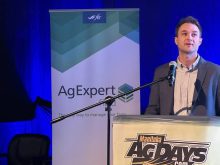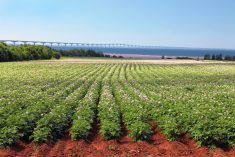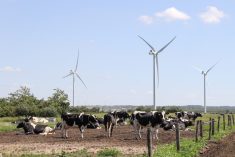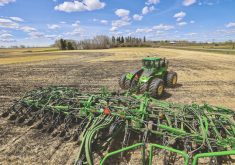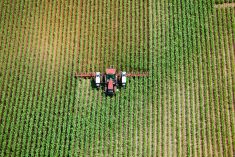The first crop of federally-funded “Living Labs” backed by the Agricultural Climate Solutions (ACS) program, set up to prove carbon-sequestering on-farm processes, takes the concept to the six provinces where such farm-level labs weren’t yet in place.
Agriculture Minister Marie-Claude Bibeau, speaking Thursday in Calgary, announced $54 million from the $185 million, 10-year ACS program launched last spring has been allocated to nine new Living Lab sites in British Columbia, Alberta, Saskatchewan, New Brunswick, Nova Scotia and Newfoundland and Labrador.
Read Also
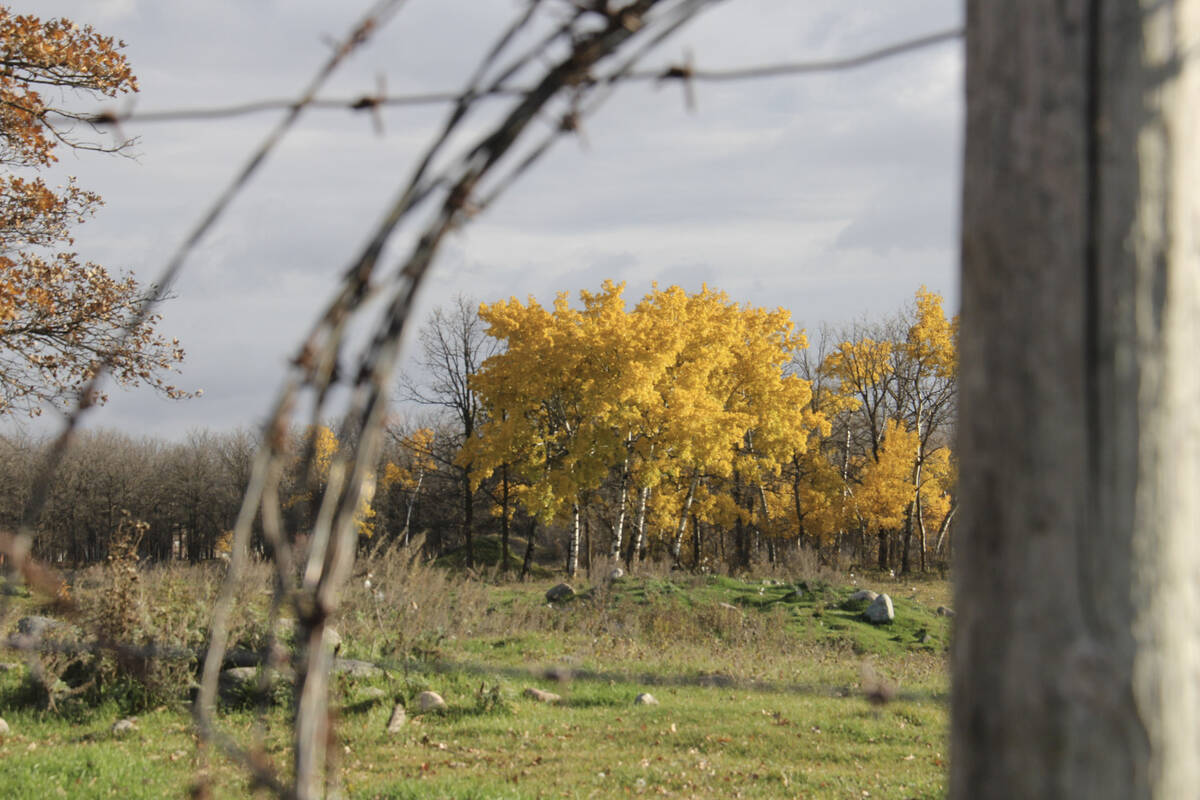
Prairie forecast: A temperature rollercoaster and the possibility of snow
Prairie forecast covering October 8 to 15, 2025. The Prairies may be in for a prolonged battle between warm and cold air before winter sets in. This could bring lots of rain or snow.
Included in this round of allocations is the first Indigenous-led Living Lab: the Bridge to Land Water Sky project, to be operated west of Prince Albert, Sask. by the Mistawasis Nêhiyawak and Muskeg Lake Cree Nation.
Each of the nine labs, the feds said, will focus on “identifying innovative technologies and on-farm management practices that can be adopted by farmers nationwide to tackle climate change.”
More specifically, the new projects explored at each Living Lab are to focus on carbon sequestration and mitigating greenhouse gas emissions via development and testing of beneficial management practices (BMPs), which “could then be widely adopted across the region and country.”
The announced projects — and their exact final non-repayable funding — are still subject to negotiation of contribution agreements with the lead recipients, the government said, also noting more living labs are still to be announced “in the coming year.”
The Living Labs initiative has been around since 2018 and, at that time, had a broader field of interest across a “wide range” of environmental issues. That initiative saw labs set up at sites in Ontario, Quebec, Manitoba and Prince Edward Island.
The ACS-backed Living Labs, however, are meant to focus specifically on reducing GHGs and sequestering carbon — although solutions they develop are also expected to “help protect biodiversity on farms, improve water and soil quality, and, through the efficient management of resources, strengthen farmers’ bottom lines.”
‘Whole farm’
The biggest chunk of funding announced Thursday goes to an $8.5 million project spearheaded by Alberta Beef Producers, to “explore the use of beef, forage and cropping systems to improve soil carbon sequestration and reduce greenhouse gas emissions.”
That project is meant to lead to the development of BMPs in crop rotations and cropping systems, land use changes, grazing management, livestock feeding, nutrient management, and “increasing carbon on the whole farm.”
Another $7.7 million goes to the Alberta Conservation Association (ACA) and Food Water Wellness Foundation, collaborating on a Living Lab to “improve soil health, reduce costs of production and sequester carbon in the soil using regenerative agriculture.”
BMPs to be examined in the ACA/Food Water Wellness project include cover cropping, intercropping, relay cropping, adaptive multi-paddock grazing, use of perennials and animals in cropping systems, and feeding strategies to cut methane emissions. The projects are also expected to “amplify and support traditional ecological knowledge and efforts of First Nations.”
Bibeau and the Alberta groups’ representatives, speaking in Calgary Thursday, noted these projects will be helpful in gathering hard data on how much carbon can be sequestered through these BMPs — with an aim of having those practices recognized to thus allow cattle producers to become eligible producers of carbon credits.
The other funding allocations announced Thursday include:
- $8 million for the South of the Divide Conservation Action Program in southern Saskatchewan, focused on four key areas — avoiding land use conversion, adaptive grazing management, restoring and enhancing perennial plant communities, and livestock grazing of “diverse annual cover crops;”
- $6 million for the Peace Region Forage Seed Association, looking at “farms as a whole, including land management, economics and the social aspects of applying new BMPs” in the Peace region of northern Alberta and B.C.;
- $6 million for the B.C. Investment Agriculture Foundation (IAF) and B.C. Agriculture Council, whose lab will also explore BMPs relating to crop rotations and cropping systems, land use changes, grazing management, livestock feeding, nutrient management and increasing carbon on the whole farm;
- $4.8 million for the Indigenous-led Bridge to Land Water Sky project in Saskatchewan, focusing on BMPs including crop diversification and cover, 4R nitrogen stewardship, pesticide management, and landscape diversification, “while committing to the protection of Indigenous values, treaties, communities, lands and resources;”
- $4.5 million for the Agricultural Alliance of New Brunswick, exploring BMPs including systems for advanced cropping, enhanced forage management, “high-performance” pasture management and efficient nitrogen management, along with landscape use;
- $4.5 million for the Nova Scotia Federation of Agriculture, focused on “four BMPs important to this region” including cover cropping in annual and perennial systems, establishing riparian zones and shelterbelts, and land swapping; and
- $3.8 million for the Newfoundland and Labrador Federation of Agriculture, exploring BMPs including diversifying forage and vegetable rotations using cover cropping, optimizing fertilizer rates, and adding composts and biochar to sandy soils.
Applicants seeking ACS funding for their Living Labs were required form a network of partnerships within a province, such as with producer organizations and other agricultural not-for-profits, along with Indigenous organizations and environmental groups.
The goal, the government said, is to set up at least one such collaboration hub in each province. — Glacier FarmMedia Network




